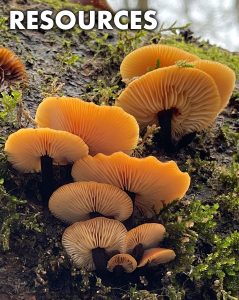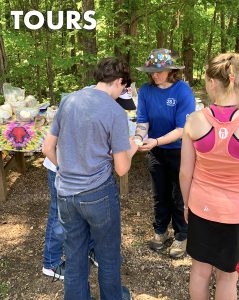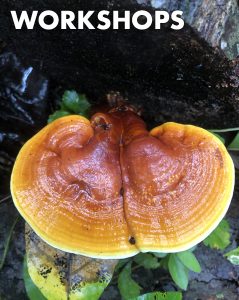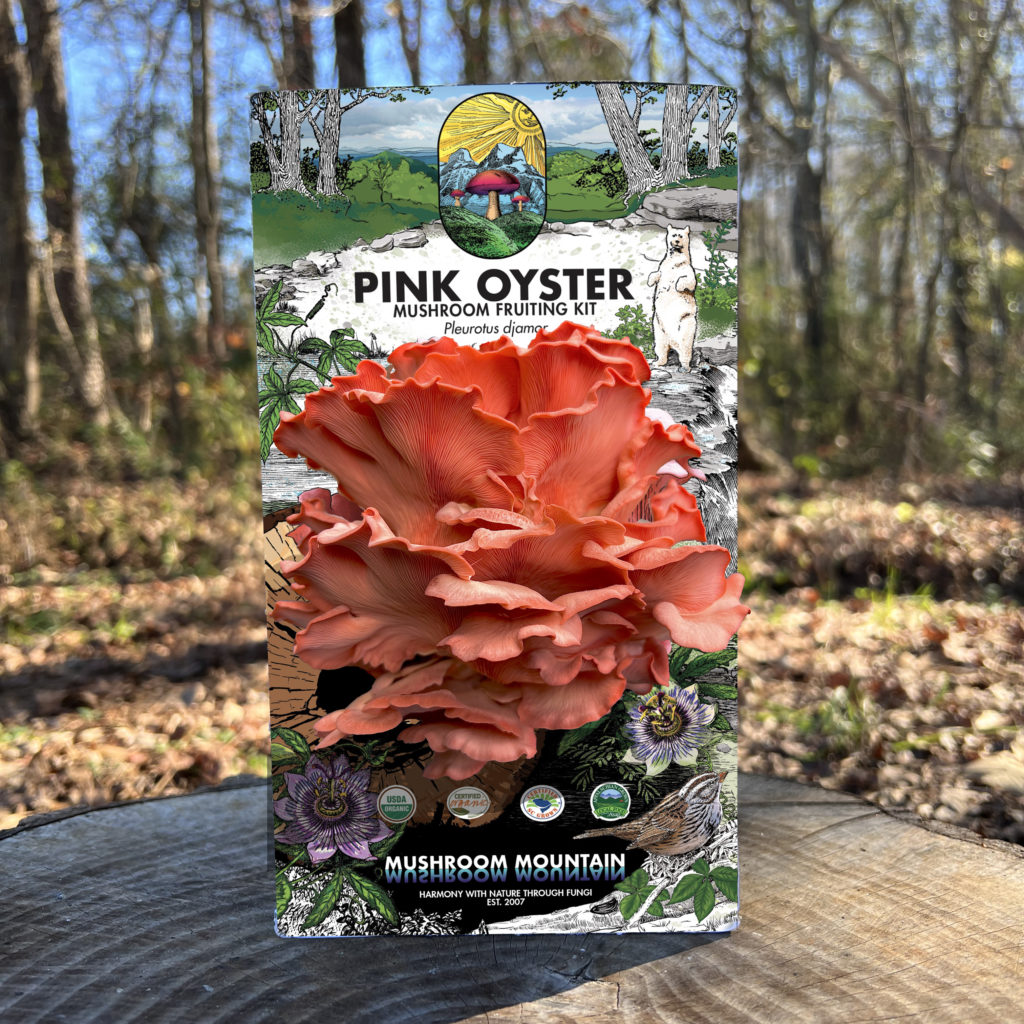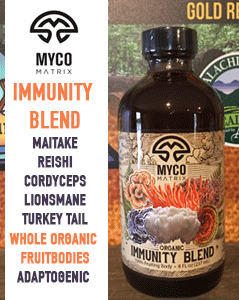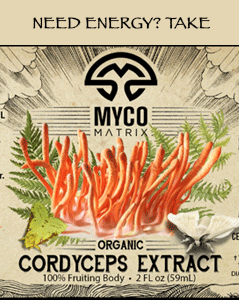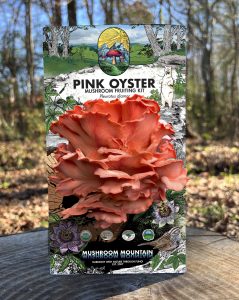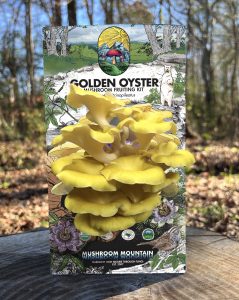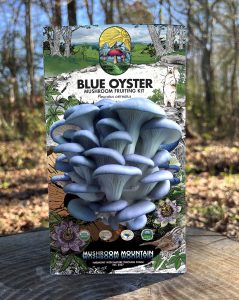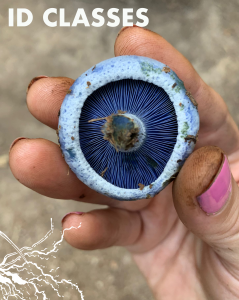Meet The Mushrooms
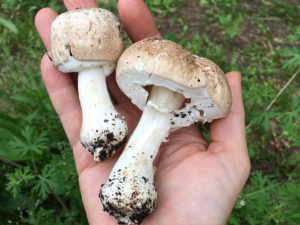
Almond Portabella – (Agaricus blazei = A.brasiliensis)
Previous slide Next slide Have composted livestock manure or can get it? Try cultivating this highly medicinal and choice edible relative of the regular portabella, which is easier to grow
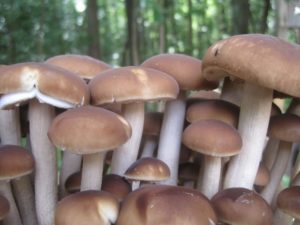
Black Poplar “Piopinno” – (Agrocybe aegerita)
Previous slide Next slide Black Poplar, or “Piopinno” in Italian, is a clustering, meaty mushroom with a nutty and crunchy flavor, it prefers hardwood logs half-buried lengthwise in a wooded
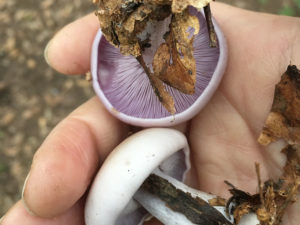
Blewit “Clemson” – (Lepista nuda)
Previous slide Next slide Blewits are lilac to purple mushrooms that can be found fruting during the fall and winter months. These need a heavy frost or freeze to initiate

Beefsteak Polypore – (Fistulina hepatica)
Beefsteak mushrooms are now cultivated in Europe on a small scale indoors, we are offering this hard to find clone on plugs so you can grow your own outdoors! The

Birch Polypore “Blue Ridge” – (Piptoporus betulinus)
A firm, corky, hoof-shaped bracket mushroom, this unique fungus has shown strong antibacterial activity, making it a good candidate for making powders and extracts for tinctures. Traditionally used as a
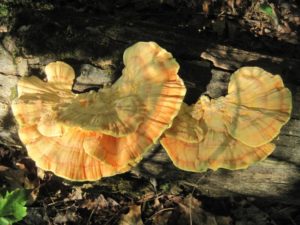
Chicken of the Woods – (Laetiporus spp.)
Previous slide Next slide Most of our Chicken of the woods strains are isolated from native stock on the East Coast of the U.S., meaning they prefer hardwoods, specifically varieties
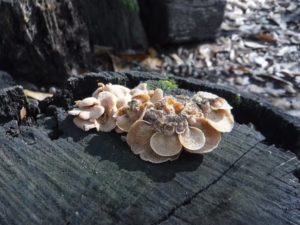
Glowing Panellus – (Panellus stipticus)
A small, luminescent, gilled mushroom native to the US mostly found on the East Coast on deciduous hardwood logs and stumps. The gills of Glowing Panellus glow brightly in complete
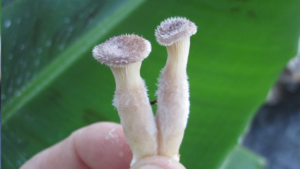
Hairy Panus – (Panus lacomtei)
This beautiful, fuzzy little Panus colonizes hardwood sawdust and chips and is also a sun-tolerant species for full sun applications where shade is a limiting factor. Recent studies from Brazil
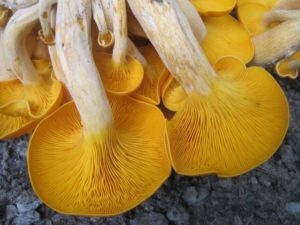
Jack O’Lantern – (Omphalotus olearius)
Previous Next Jack O’Lanterns are bioluminescent mushrooms that possess the ability to produce Luciferase, an enzyme responsible for the glowing gills, which is an ATP/Phosporylation pathway. This pathway can be
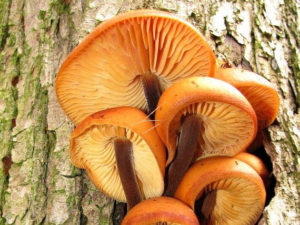
Enoki “Velvet Foot” – (Flammulina velutipes)
Enoki mushrooms, known mostly in Asia for it’s reported anti-cancer properties, are commonly added raw to hot soups. This one also is excellent sauteed lightly and mixed into salads. When
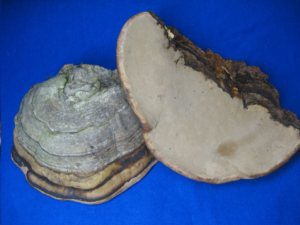
Iceman Polypore – (Fomes fomentarius)
One of the tinder mushrooms found in “Otzi the Iceman”s possessions, cloned from a native specimen right here in the Southeastern US. This beautiful polypore has been used for centuries
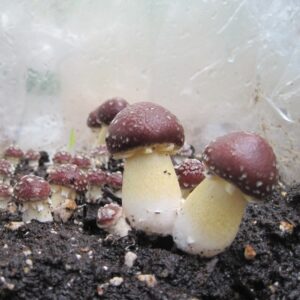
King Stropharia “Clemson” – (Stropharia rugoso-annulata)
One of the easiest mushrooms to grow for beginners, experienced growers have used this mushroom as a learning tool for cultivating in hardwood chip beds or mulch. What makes this
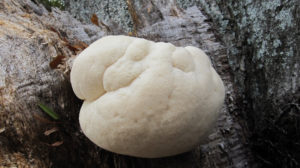
Lions Mane “Pom Pom” – (Hericium erinaceus)
Previous slide Next slide A mushroom that tastes like YES crabmeat! Hericium fruit have spines, not gills, and can be found fruiting on a variety of hardwood trees. Nearly identical
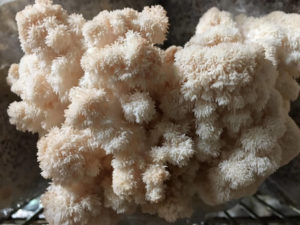
Lion’s Mane “Tufted” – (Hericium americanum)
Previous Next A mushroom that tastes like lobster? Become a believer and this will be one of your favorite edible mushrooms that you ever grow. Hericium fruit have spines, not
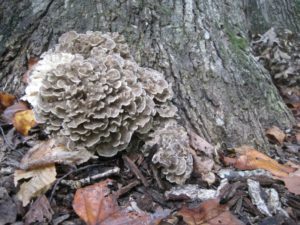
Maitake, Hen of the Woods – (Grifola frondosa) – EXPERIMENTAL
Hen of the Woods, or Maitake, is a beautiful, clustering polypore mushroom that ranks as one of the best medicinal foods in the woods. Our strain was cloned from the
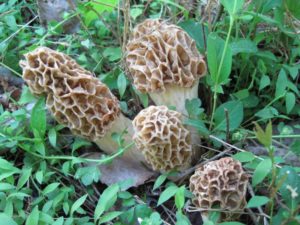
Morel “Blonde” – (Morchella americana)
Previous Next Morels are the most recognized and sought after mushroom on the planet, rivaling truffles in their elusiveness and difficulty in cultivation. Fortunately they are now being grown with
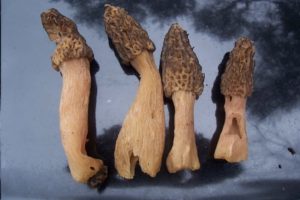
Morel “Black” – (Morchella angusticeps)
Morels are the most recognized and sought after mushroom on the planet, rivaling truffles in their elusiveness and difficulty in cultivation. Fortunately they are now being grown with some degree
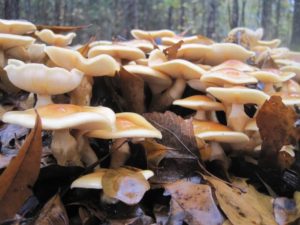
Nameko – (Pholiota nameko)
Previous slide Next slide Nameko is the most cultivated mushroom by volume in Japan, for a reason. It is considered a valuable medicinal mushroom with cancer fighting properties, and the
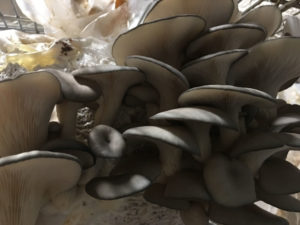
The Warm Blue Oyster – (Pleurotus ostreatus)
Previous Next The warm blue oyster is one of our most prolific indoor commercial fruiting strains with an extremely WIDE fruiting temperature window. Meaty and sweet, this mushroom is also
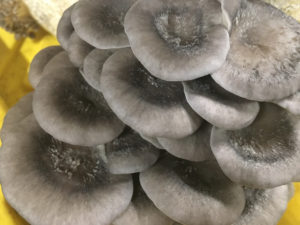
The Cold Blue Oyster – (Pleurotus ostreatus)
The cold blue oyster is one of our most beautiful winter mushrooms and commercial fruiting strain with an extremely low fruiting temperature window. Meaty and sweet, this mushroom is also
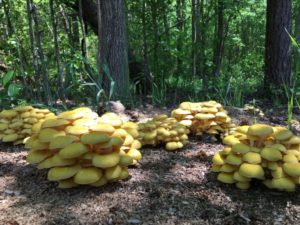
Golden Oyster – (Pleurotus citrinopileatus)
One of our most beautiful oyster species, this warm weather strain is VERY FRAGILE when mature. They resemble a bouquet of beautiful yellow flowers, smell like fresh watermelon, and taste
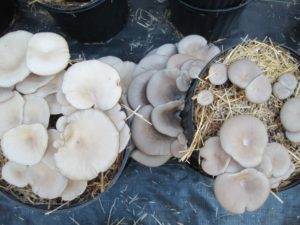
Brown Oyster – (Pleurotus ostreatus)
Previous slide Next slide Our Brown Oyster – (Pleurotus ostreatus) strain is one of the best tasting in our collection. Very similar to the native white oyster, this strain differs
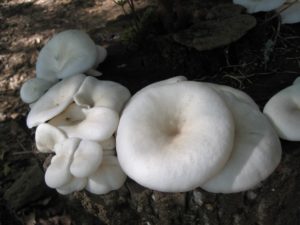
Phoenix Oyster – (Pleurotus pulmonarius)
Phoenix Oyster – (Pleurotus pulmonarius) mushrooms are the true summer oyster, that prefer warmer temperatures and can be distinguished from white-spored P.ostreatus with their beautiful lilac colored spore-prints. Most strains
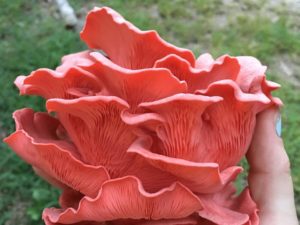
Pink Oyster – (Pleurotus djamor)
Previous Next This tropical oyster mushroom is a stunning pink color and resembles the flavor of seafood, making it a big hit with chefs and market buyers. We grow this
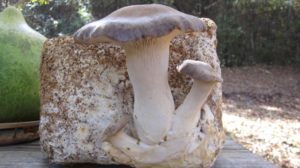
King Oyster – (Pleurotus eryngii)
King Oyster – (Pleurotus eryngii) taste exactly like the freshest scallops you could ever dream of and can become addictive. The entire mushroom is basically an enlarged, tender stem, that
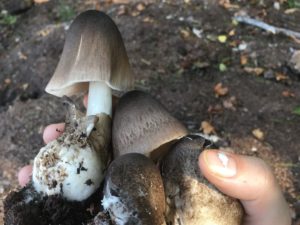
Paddy Straw “Horse Straw” – (Volvariella volvacea)
Previous Next A tropical mushroom that fruits only above 80F and actually prefers 90+F, this protein rich species is widely cultivated in Asia on rice straw, but can be grown
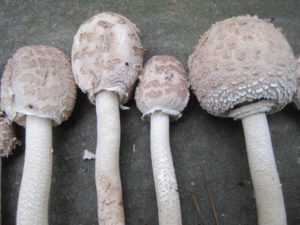
Parasol – (Amerilepiota procera)
Parasol mushrooms can be found in most temperate climates worldwide, and are easy to identify since they are tall have a slightly shaggy, brown cap. Green spored parasol (poisonous with
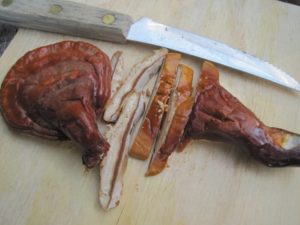
Reishi “RED” – (Ganoderma lucidum)
Reishi “RED” – (Ganoderma lucidum) – This is red capped, commercial Chinese strain of Reishi, also known as the “Mushroom of Immortality” or Ling-Chi. This mushroom is beautifully lacquered with
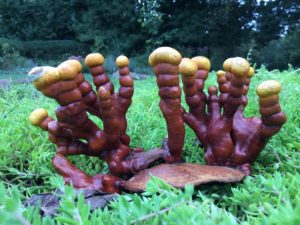
Reishi “GOLD” – (Ganoderma curtisii)
Reishi “GOLD” – (Ganoderma curtisii) – Also known as the “Mushroom of Immortality” or Ling-Chi, there are a few species of Reishi mushrooms native to temperate climates, and this is
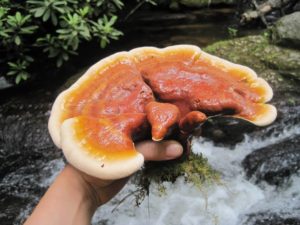
Reishi “HEMLOCK” – (Ganoderma tsugae)
Previous Next Also known as the “Mushroom of Immortality” or Ling-Chi, there are a few species of Reishi mushrooms native to temperate climates, and this is the prettiest we have
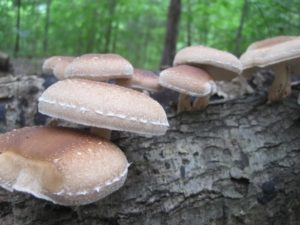
Shiitake “Wild N.C. strain (HOT)” – (Lentinula edodes)
Previous Next This is a clone from an “escapee”, or a wild mating of commercial log grown shiitakes that appeared in North Carolina on a large fallen oak at Warren
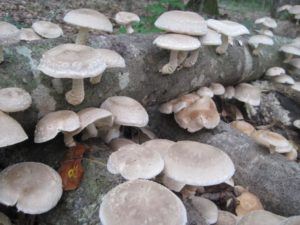
Shiitake “Wide Range” – (Lentinula edodes)
Shiitake mushrooms are one of the easiest and most prolific, forgiving mushrooms to grow on logs for all skill levels, and a perfect mushroom for beginners. Shiitake are meaty and
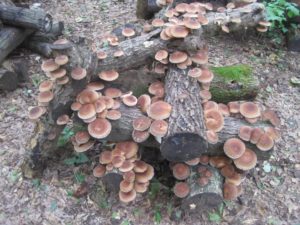
Shiitake “warm” – (Lentinula edodes)
Shiitake mushrooms are one of the easiest and most prolific, forgiving mushrooms to grow on logs for all skill levels, and a perfect mushroom for beginners. Shiitake are meaty and
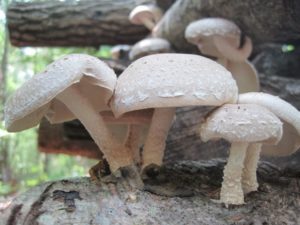
Shiitake “outdoor cold” – (Lentinula edodes)
Previous slide Next slide Shiitake mushrooms are one of the easiest and most prolific, forgiving mushrooms to grow on logs for all skill levels, and a perfect mushroom for beginners.
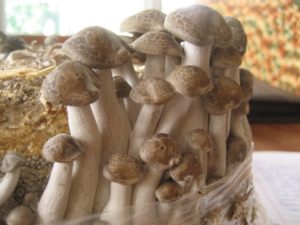
Brown Shimeji – (Hypsizygus tessulatus)
Brown Shimeji – (Hypsizygus tessulatus), with its beautiful watermarked cap, almost cracked or marbled appearance like a tortoise shell, is a crunchy and sweet mushroom that is wonderful sautéed with
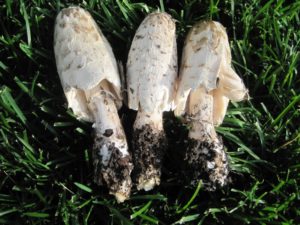
Shaggy Mane – (Coprinus comatus)
Previous slide Next slide Shaggy Manes are super easy to identify for beginners, and are typically harvested in the morning, since they literally “melt’ by midday. Shaggies prefer composted livestock
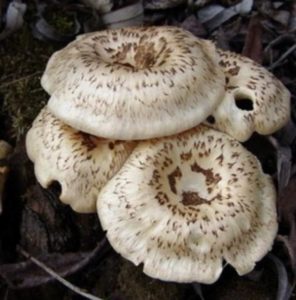
Tiger Sawgill (Lentinus tigrinus)
A crunchy, nutty native relative to the US and with global distribution, this is a cousin to the widely cultivated Shiitake. it is currently being researched for it’s ease of
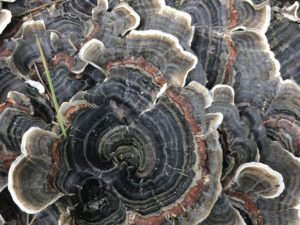
Turkey Tail (Trametes versicolor)
Previous slide Next slide Turkey Tail is a mushroom that grows on hardwood, has beautiful multicolored zones and it is very easy to identify. Although not directly edible due to
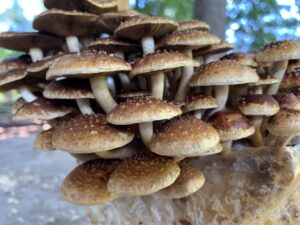
Chestnut Fungus – Pholiota adiposa
A cousin of the slimy Nameko (Pholiota nameko) this wonderful clustering, wood loving mushroom forms dense clusters of beautiful, dark orange gilled mushrooms with a slightly shaggy cap, without the
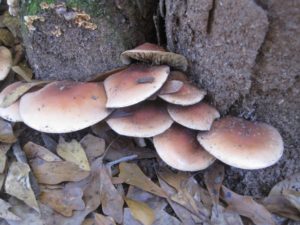
Bricktop – Hypholoma sublateritium
An edible species related to the poisonous Sulphur Tuft (Hypholoma fasciculare), this mushroom is very aggressive and prolific, sometimes evicting other mushrooms out of their patches to set up camp.
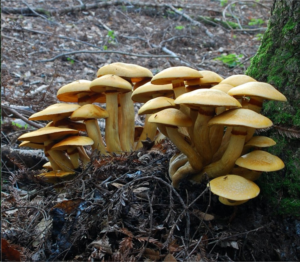
Laughing Gym – Gymnopilus validipes
A large, lemon-yellow mushroom that forms huge dense clusters with very large caps, this mushroom contains kava kava like molecules that can ease your inhibition to the point of slight
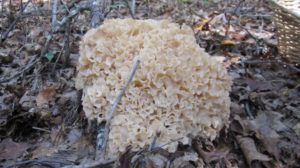
Cauliflower – Sparassis crispa
Previous slide Next slide Cauliflower mushrooms are unusual looking fungi that create wavy, brain coral like structures that are typically found at the base of dying or injured conifers. They
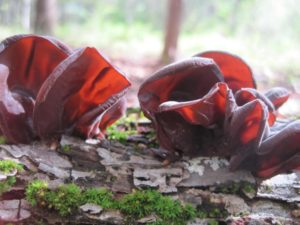
Woodear – Auricularia americana
Previous slide Next slide Wood ears are classified as jelly fungi, and are essentially flavorless but used for their blood thinning properties and their crunchy seaweed salad like texture. Wood

